Text
A longread on writing comedy
This is what I do to research writing comedy:
What helped me most was analyzing a lot of jokes: "It's funny. Why is it funny? How does this joke work?" Usually it's something that subverses the expectations in a specific way or an unexpected collision of two things. (Like a pun is a collision of sound and meaning.) For my analysis, I wonder: "What is the expectation after the set-up? Why do I have this expectation? How does the pay-off subverse the expectation? Why does it still make sense in relation to the set-up?"
For example: I unleashed this kind of analysis on the movie George of the Jungle. It has a surprisingly high hit rate, I think around three jokes per minute in the first one third of the movie, and it still manages to get the story going and the characters introduced. I’ve mentioned this before, but I don’t think I gave examples, and you know I’m all about the teaching.
I found at least 17 types. Heads up, this is going to be a longread.
Type 1: Puns
Narrator: “When they finally beheld the mighty Ape Mountain…”
[They see a mountain shaped like a gorilla head.]
Narrator, cont’d: “… they reacted with awe.”
All: “Aww.”
Narrator: “I said ‘awe”. A-W-E.”
All: “Ooh!”
Narrator: “That’s better.”

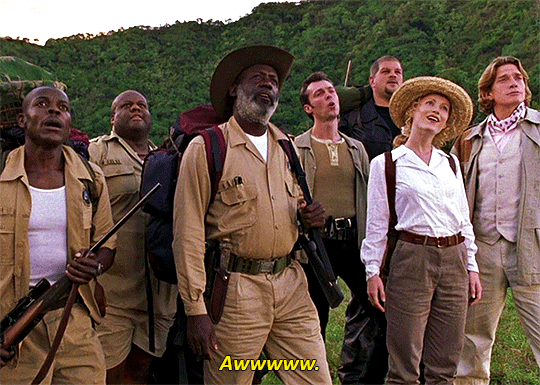
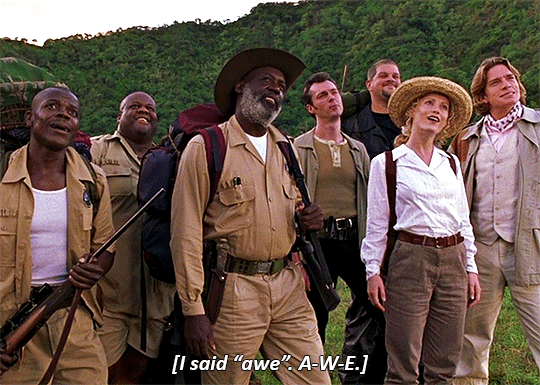
Explanation:
The pun lies in the fact that “awe” and “aww” sound the same.
There is a visual type of comedy as well that we can’t effectively reproduce in writing: the mountain is shaped like a gorilla head.
BTW: the narrator defies genre expectations by interacting with the characters, and the characters defy genre expectations by being able to hear the narrator.
Type 2: Tone of voice
Narrator, about the main characters: “Scraped and boo-booed, they searched high and low.
Explanation:
“Boo-booed” is a children’s word, not the tone you would use for a hero. Compare “tummy” and “stomach”.
Type 3: Defying genre expectations
[The guide falls off a rope bridge into a deep chasm.]
Narrator: “Don’t worry—nobody dies in this story. They just get really big boo-boos.”
Explanation:
The narrator is breaking the fourth wall.
Again: tone of voice with the “boo-boos”.
Contrast between the boo-boo and the injuries one usually suffers after falling into a deep chasm.
Type 4: Not defying genre expectations
[A lion appears from the bushes. A baby monkey makes a sound like “uh-oh”.]
[The baby monkey does the Tarzan call and bangs its chest.]
[The lion flees.]
[The monkey giggles.]
[The monkey gives George a thumbs up.]
[From the bushes, the lion winks at George. George winks back.]
Explanation:
Expectation: the lion is a danger to the baby monkey and George will need to fight it to save the monkey.
Defying expectations: the monkey and the lion are in on the plan.
Not defying genre expectations: George of the Jungle is clearly based on Tarzan. George doesn’t refer to that fact, but the monkey does, by doing the Tarzan call and banging its chest.
Improbable: monkeys who giggle and give thumbs up.
Impossible: lions who wink.
Type 5: Contrast
Narrator: “Meanwhile, 43 vines away, George’s kingdom is being threatened by a terrifying intruder.”
[We see the adorable Leslie Mann, who plays Ursula, smiling and talking to the camera.]
Ursula: “Hi! It’s me again!”
Explanation:
Contrast between what the narrator says and what we see.
The narrator isn’t lying. He refers to Lyle and the poachers who will be introduced in this scene.
There’s also humor in the phrase “43 vines away”, because of the overt specificity and because a vine is not a measure of distance.
Type 6: Oblivious character
[Lyle takes a Polaroid picture of one of the guides.]
Lyle: “Do you like it? Magic picture. Yet another gift from America. Here you go. You’re welcome.”
[The guide replies in Swahili. There is no translation in the subtitles.]
[All the guides laugh.]
[The guide continues in Swahili. Only the last few words are in English: “35 mm.” The guide takes his own camera and snaps a picture of Lyle.]
[All the guides and Ursula laugh.]
Lyle, not amused: “Translation, please.”
Other guide: “He says he likes your magic pictures, but he prefers the resolution of the Leica 35 mm transparencies.”
[Everyone but Lyle laughs.]
Other guide, cont'd: “He also says your lens is dirty, but he has the equipment to clean it for you.”
Explanation:
Lyle doesn’t understand Swahili, while the guides understand everything Lyle says to them in English.
The fact that Ursula, Lyle's fianceé, understands Swahili and laughs along with the guides, is adds contrast to his obliviousness.
Lyle is the butt of the joke. He humiliates the guides and now he’s humiliated on his own turf while the guides don’t stoop down to his level.
This joke is threefold: 1. The set-up: Lyle is the arrogant asshole who thinks he’ll show the locals about technological development. 2. The guide is not only not impressed, he knows Polaroid and has a camera of his own, and is knowledgeable. 3. And he demonstrates his superiority in a (more or less) polite way.
Type 7: Slapstick
[George is swinging on the vines.]
Narrator: “He is swift. He is strong. He is sure. He is smart.”
[George hits a tree and falls.]
Narrator, deadpan: “He is unconscious.”
Explanation:
Slapstick is another type of humor that barely translates to written fiction, when the actors behave silly, for example by falling over, hurting themselves, or others. It's often over the top. Laurel & Hardy is a well-known example of slapstick.
Type 8: Alliteration
Narrator: “The tired trekkers trudged on feverish footsies over perilous paths.”
Explanation:
If several words in each other’s vicinity start with the same letter, it’s called alliteration.
Note that "footsies" is another example of a contrast in tone of voice—it’s another children’s word.
Type 9: Improbable things
[George spins a lion over his head.]
George: “George not even trying hard.”
Explanation:
While not impossible, spinning an actual lion over one’s head is improbable and thus goes against real-world expectations.
Type 10: Impossible things
[A gorilla called Ape enters George’s tree house and scares Ursula.]
Ursula: “What does it want? What does it want?”
Ape: [points at a big book] “It wants its Physician’s Desk Reference, if you don’t mind, unless you’d rather die of dengue fever, of course.”
[Ursula faints again.]
Explanation:
Gorillas can’t talk, can’t read, and aren’t usually well-versed in curing tropical diseases.
Type 11: Breaking social norms
[Ursula is unconscious. George licks her face, clearly meaning well.]
Explanation:
In our society, it is not only considered impolite but also gross to lick the face of a stranger. The fact that George does this anyway, clearly not realizing he does something wrong, is a subversion of what we’d expect of social norms and behavior.
Type 12 and 13: Hyperbole and understatement
[Earlier, Ursula fainted when she saw Ape talk and do human things.]
[Ape is reading when he sees Ursula look at him. He panics, throws the book away, starts grunting, and bangs his chest.]
[Ursula faints again.]
Ape: “Eh.”
Explanation:
Ursula fainting again is a hyperbole: a reaction that is stronger than expected.
Ape saying “Eh.” is an understatement: a reaction less strong than expected.
Type 14: Obvious repetitions
Ursula: “… And I didn’t want my fianc—Um, this guy I was with, to worry.”
Narrator, a few moments later: “George and Ursula set out on a desperate search to find her fianc—Uh, that guy she was with.”
Type 15: Stating the obvious
[We see the guide’s hand, pointing at a really big footprint in the mud.]
Narrator: “Meanwhile, back at the really big footprint in the mud, (...)”
Explanation:
Stating the obvious can be funny because the audience doesn’t expect you to do or say this because it is so very obvious.
Type 16: Adult humor
[George watches Ursula sleep.]
George: “George having stirrings of special feelings right now.”
Ape, drily: “I see.”
George: “Good thing she same species, huh?”
Explanation:
Ape’s reply, “I see”, could be an innuendo, but it doesn’t come across as a joke (to me at least). Maybe it’s downplayed because it’s a children’s movie.
If this is an innuendo, it’s a play on words. “I see”, figuratively, for “I understand”, or literally for “Yes, I can tell from your erection.”
“Good thing she same species” because George shouldn’t have stirrings of special feelings for animals.
Type 17: Rhyme
[George is swinging on a vine.]
George: “Look, like this!”
Song: “He flies through the air with the greatest ease.”
Song, cont’d: “Our daring young man on the flying trapeze.”
[George hangs upside down from a vine.]
George: “Look, no hands.”
Song, cont’d: “His movements so grateful, all girls he could please.”
Song, cont’d: “And with love he is swinging away…”
[On the ground, gorillas frantically run back and forth with a safety net.]
Song, cont’d: “He flies through the air with the greatest of ease.”
Ursula: “George, watch out for that—”
Song, cont’d while George yelps: “Our daring young man on the—” [Song stops abruptly.]
[Thud]
[George grunts.]
Ursula: “… tree.”
Explanation:
When words end in the same sounds, we call it rhyme.
It’s physically impossible to hang from a vine with no hands.
The gorillas with the safety net imply that they expect George to fall.
Also, it’s improbable that gorillas would do this.
Slapstick: George hitting the tree.
Comedic timing: Ursula being just too late to warn George about the tree.
Song + Ursula: “Our daring young man on the—tree.” Because by then he is literally stuck to the tree.
Or throw everything at the audience, whatever.
[George has a pet elephant, Shep, who behaves like a happy doggy.]
[Shep is chewing a humongous bone.]
Narrator: “Later, they rested, while the tired tusker teethed on a… Wait a second, the dog bone is too much. Lose it.”
[The dog bone disappears.]
Narrator: “That’s better.”
[Shep whines.]
Explanation:
Improbable: Pet elephant who behaves like a doggy.
Alliteration: “tired tusker teethed”
Fourth wall: the narrator comments on the story while it is going on, and edits it.
***
Here are some other funny situations from the movie. Try to analyze what’s going on. Usually you can spot several types.
Situation 1
Narrator: “Meanwhile, at a very big and expensive waterfall set, Ursula was amazed that she was lost in the wilderness with a jungle man.”
Ursula: “And here I am, lost in the wilderness with a jungle man.”
Situation 2
Narrator: “The guides came dangerously close—”
Narrator: “That is, dangerously close to shove a coconut up in Kyle’s—”
Narrator: “Sleeping bag.”
Situation 3
Lyle: “I am the richest, handsomest, smartest guy here, so I get to go first!”
[Lyle pushes past everyone, trips over a tree stump and lands face first in a steaming pile of elephant poop.]
Lyle: “There’s an elephant here.”
Guide, while looking straight into the camera: “Bad guy falls into poop. Classical element of physical comedy.”
Guide, cont’d: “Now comes the element where we throw our heads back and laugh.”
Guide, cont’d: “Ready?”
Other guides, while also looking straight into the camera: “Ready!”
[All the guides throw their heads back and laugh.]
[Monkey laughs and points at Lyle.]
[Off-screen, other animals make laughing sounds.]
Lyle, spitting out poop: “Those are nowhere near properly digested.”
Lyle, cont’d: “In case anyone is wondering, I’m okay.”


Situation 4
[Cliffhanger: it looks like Lyle has shot George from up close.]
Narrator: “Whew! Okay kids, let’s settle down and review the important information. Lyle is a big doofus. Poor George was actually shot but can’t die because, let’s face it, he’s the hero. So, the naturally concerned and preternaturally wealthy Ursula Stanhope whisked George away on a private jet bound for the country of his birth—”
[George has a tiny band-aid on his forehead.]
Narrator, cont’d: “—where he’s gonna get the finest medical treatment available!”
Ursula: “I’m gonna get you the finest medical treatment available.”
Situation 5
Narrator: “Well, Ursula […] could use a best friend now.”
Best friend: “Hi!”
Ursula: “He’s in the shower.”
Best friend, distracted: “Not anymore.”
George, naked: “Bad waterfall. First, water get hot—”
[A sexy saxophone plays]
George, cont’d: “Then George slips on this strange yellow rock.”
[Perspective: the camera looks at the two women, seen from between George’s legs. They are clearly ogling his crotch.]
[Ursula swoons.]
George, noticing the friend: “Hi! George of jungle.”
Friend, eager: “Charmed, I’m sure.”
[Ursula hands George objects that barely cover his crotch. The camera switches back to a frontal view of George. The friend is still ogling George.]
Best friend, mumbling appreciatively: “I see why they made him king of the jungle.”
***
I hope this was helpful. Don’t hesitate to ask me any questions, and happy writing!
Follow me for more writing advice, or check out my other writing tips here. New topics to write advice about are also always appreciated.
I'm too tired to bother with a tag list. If you like to be added to my list and get a notification whenever I post new writing advice, let me know.
131 notes
·
View notes
Text
Ways to solve the Why Can’t They Use Magic To Fix Everything problem:
•Magic has a cost. The more powerful the spell, the more it drains the caster’s life.
•’We tried that ages ago.The gods grew angry at our arrogance and stripped most of our powers away.’
•Magic is tied to the stars and planets. Its full potential can only manifest on certain astrological events.(And these are once-in-a-millennia type events)
•Only one will a pure heart and selfless intentions can use their full power.
•All magic users are descendants of a (god/spirit). As the years have gone by, the blood has become more diluted, and magic has grown weaker as a result.
•Spell casters can only cast (finite number of spells). They end up using their gift on trivial matters.
•’After the war, we realized the dangers that magic presented. And so we sealed it away, lest it destroy the world.’
•Everyone has magic. Trying to solve one problem is futile as it can be easily undone(often violently and with much destruction)
•inverse of the above: everyone has magic, but their powers are limited and (mostly) harmless.
•Individual, company, or nation has a monopoly on the only substance that can negate magic. As they rule the world, they have installed anti-magic devices everywhere.
•Individual, group, company, or nation has a monopoly on magic. To insure their grip on power, all magic users that do not submit to them are killed.
•An act of good will spawn one of evil. The use of fire will cause somewhere to grow cold and dark. And to save a life, one must sacrifice another.
•The only magic people have access to is Chaos Magic. No one uses it, for obvious reasons.
—••• •• ——• ——• • ••• —•• •• —•—• —•— ••— •••
4K notes
·
View notes
Text
Yay, unsolicited advice time! Or, not really advice, more like miscellaneous tips and tricks, because if there's one thing eight years of martial arts has equipped me to write, it's fight scenes.
.
Fun things to add to a fight scene (hand to hand edition)
It's not uncommon for two people to kick at the same time and smack their shins together, or for one person to block a kick with their shin. This is called a shin lock and it HURTS like a BITCH. You can be limping for the rest of the fight if you do it hard enough.
If your character is mean and short, they can block kicks with the tip of their elbow, which hurts the other guy a lot more and them a lot less
Headbutts are a quick way to give yourself a concussion
If a character has had many concussions, they will be easier to knock out. This is called glass jaw.
Bad places to get hit that aren't the groin: solar plexus, liver, back of the head, side of the thigh (a lot of leg kicks aim for this because if it connects, your opponent will be limping)
Give your character a fighting style. It helps establish their personality and physicality. Are they a grappler? Do they prefer kicks or fighting up close? How well trained are they?
Your scalp bleeds a lot and this can get in your eyes, blinding you
If you get hit in the nose, your eyes water
Adrenaline's a hell of a drug. Most of the time, you're not going to know how badly you've been hurt until after the fact
Even with good technique, it's really easy to break toes and fingers
Blocking hurts, dodging doesn't
.
Just thought these might be useful! If you want a more comprehensive guide or a weapons edition, feel free to ask. If you want, write how your characters fight in the comments!
Have a bitchin day <3
12K notes
·
View notes
Text
19 Most Common Character Flaws in Horror Fiction
Curiosity: Characters who are overly curious may investigate dangerous situations or places, leading to their downfall.
Arrogance: Arrogant characters may underestimate threats or refuse to heed warnings, putting themselves in danger.
Recklessness: Characters who act impulsively or without considering the consequences may find themselves in perilous situations.
Naivety: Naive characters may be easily deceived or manipulated by villains or supernatural forces.
Overconfidence: Overconfident characters may believe they can handle any situation, leading them to take unnecessary risks.
Stubbornness: Stubborn characters may refuse to listen to advice or change their course of action, even when it's clear they're in danger.
Greed: Greedy characters may prioritize personal gain over safety, leading them to make unethical or dangerous choices.
Distrust: Characters who are overly distrustful may alienate allies or miss crucial information, making them more vulnerable.
Cowardice: Cowardly characters may abandon others in dangerous situations or fail to confront threats when necessary.
Impulsiveness: Impulsive characters may act without thinking, leading to mistakes or putting themselves in harm's way.
Lack of Empathy: Characters who lack empathy may disregard the well-being of others, making them more susceptible to manipulation or isolation.
Overprotectiveness: Overprotective characters may prioritize the safety of loved ones to the detriment of their own safety or the safety of others.
Addiction: Characters who are addicted to substances or behaviors may make irrational decisions or be more easily controlled by external forces.
Obsession: Characters who are obsessed with a goal or idea may pursue it at any cost, even endangering themselves or others.
Paranoia: Paranoid characters may see threats where none exist, leading them to take extreme measures or isolate themselves unnecessarily.
Lack of Self-awareness: Characters who lack self-awareness may fail to recognize their own limitations or the impact of their actions on others.
Insecurity: Insecure characters may doubt their own abilities or judgment, making them more susceptible to manipulation or self-destructive behavior.
Ignorance: Characters who are ignorant of the true nature of the threats around them may underestimate their danger or fail to take necessary precautions.
Desperation: Characters who are desperate may make rash decisions or ally themselves with dangerous individuals or entities in hopes of achieving their goals.
1K notes
·
View notes
Text
Fantasy Guide to Interiors



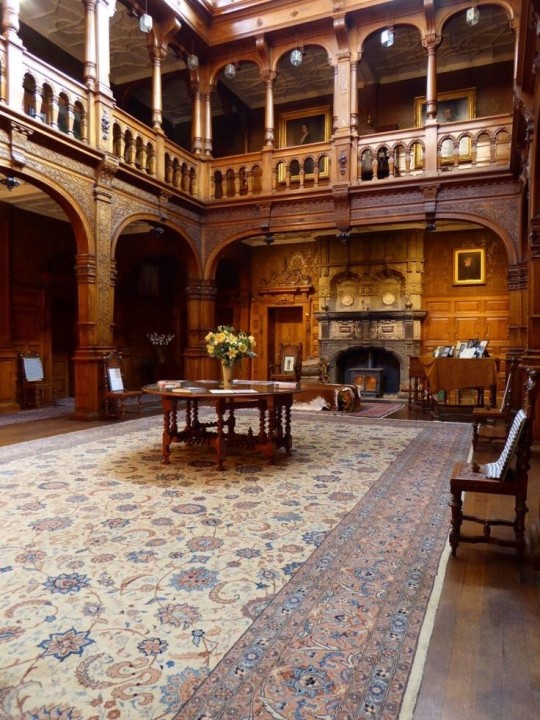
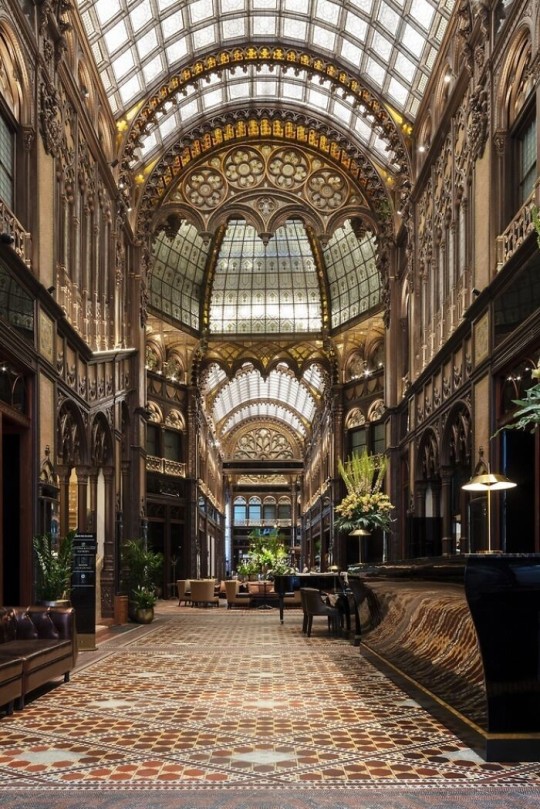
As a followup to the very popular post on architecture, I decided to add onto it by exploring the interior of each movement and the different design techniques and tastes of each era. This post at be helpful for historical fiction, fantasy or just a long read when you're bored.
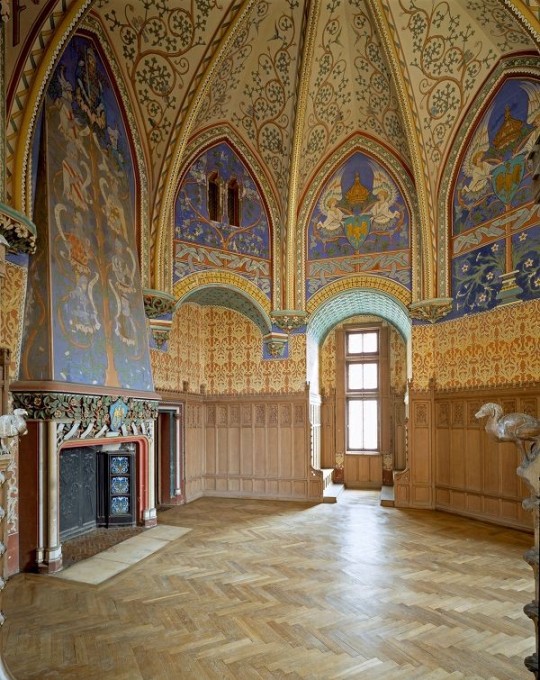


Interior Design Terms
Reeding and fluting: Fluting is a technique that consists a continuous pattern of concave grooves in a flat surface across a surface. Reeding is it's opposite.
Embossing: stamping, carving or moulding a symbol to make it stand out on a surface.
Paneling: Panels of carved wood or fabric a fixed to a wall in a continuous pattern.
Gilding: the use of gold to highlight features.
Glazed Tile: Ceramic or porcelain tiles coated with liquid coloured glass or enamel.
Column: A column is a pillar of stone or wood built to support a ceiling. We will see more of columns later on.
Bay Window: The Bay Window is a window projecting outward from a building.
Frescos: A design element of painting images upon wet plaster.
Mosaic: Mosaics are a design element that involves using pieces of coloured glass and fitted them together upon the floor or wall to form images.
Mouldings: ornate strips of carved wood along the top of a wall.
Wainscoting: paneling along the lower portion of a wall.
Chinoiserie: A European take on East Asian art. Usually seen in wallpaper.
Clerestory: A series of eye-level windows.
Sconces: A light fixture supported on a wall.
Niche: A sunken area within a wall.
Monochromatic: Focusing on a single colour within a scheme.
Ceiling rose: A moulding fashioned on the ceiling in the shape of a rose usually supporting a light fixture.
Baluster: the vertical bars of a railing.
Façade: front portion of a building
Lintel: Top of a door or window.
Portico: a covered structure over a door supported by columns
Eaves: the part of the roof overhanging from the building
Skirting: border around lower length of a wall
Ancient Greece
Houses were made of either sun-dried clay bricks or stone which were painted when they dried. Ground floors were decorated with coloured stones and tiles called Mosaics. Upper level floors were made from wood. Homes were furnished with tapestries and furniture, and in grand homes statues and grand altars would be found. Furniture was very skillfully crafted in Ancient Greece, much attention was paid to the carving and decoration of such things. Of course, Ancient Greece is ancient so I won't be going through all the movements but I will talk a little about columns.
Doric: Doric is the oldest of the orders and some argue it is the simplest. The columns of this style are set close together, without bases and carved with concave curves called flutes. The capitals (the top of the column) are plain often built with a curve at the base called an echinus and are topped by a square at the apex called an abacus. The entablature is marked by frieze of vertical channels/triglyphs. In between the channels would be detail of carved marble. The Parthenon in Athens is your best example of Doric architecture.
Ionic: The Ionic style was used for smaller buildings and the interiors. The columns had twin volutes, scroll-like designs on its capital. Between these scrolls, there was a carved curve known as an egg and in this style the entablature is much narrower and the frieze is thick with carvings. The example of Ionic Architecture is the Temple to Athena Nike at the Athens Acropolis.
Corinthian: The Corinthian style has some similarities with the Ionic order, the bases, entablature and columns almost the same but the capital is more ornate its base, column, and entablature, but its capital is far more ornate, commonly carved with depictions of acanthus leaves. The style was more slender than the others on this list, used less for bearing weight but more for decoration. Corinthian style can be found along the top levels of the Colosseum in Rome.
Tuscan: The Tuscan order shares much with the Doric order, but the columns are un-fluted and smooth. The entablature is far simpler, formed without triglyphs or guttae. The columns are capped with round capitals.
Composite: This style is mixed. It features the volutes of the Ionic order and the capitals of the Corinthian order. The volutes are larger in these columns and often more ornate. The column's capital is rather plain. for the capital, with no consistent differences to that above or below the capital.
Ancient Rome
Rome is well known for its outward architectural styles. However the Romans did know how to add that rizz to the interior. Ceilings were either vaulted or made from exploded beams that could be painted. The Romans were big into design. Moasics were a common interior sight, the use of little pieces of coloured glass or stone to create a larger image. Frescoes were used to add colour to the home, depicting mythical figures and beasts and also different textures such as stonework or brick. The Romans loved their furniture. Dining tables were low and the Romans ate on couches. Weaving was a popular pastime so there would be tapestries and wall hangings in the house. Rich households could even afford to import fine rugs from across the Empire. Glass was also a feature in Roman interior but windows were usually not paned as large panes were hard to make. Doors were usually treated with panels that were carved or in lain with bronze.
Ancient Egypt
Egypt was one of the first great civilisations, known for its immense and grand structures. Wealthy Egyptians had grand homes. The walls were painted or plastered usually with bright colours and hues. The Egyptians are cool because they mapped out their buildings in such a way to adhere to astrological movements meaning on special days if the calendar the temple or monuments were in the right place always. The columns of Egyptian where thicker, more bulbous and often had capitals shaped like bundles of papyrus reeds. Woven mats and tapestries were popular decor. Motifs from the river such as palms, papyrus and reeds were popular symbols used.
Ancient Africa
African Architecture is a very mixed bag and more structurally different and impressive than Hollywood would have you believe. Far beyond the common depictions of primitive buildings, the African nations were among the giants of their time in architecture, no style quite the same as the last but just as breathtaking.
Rwandan Architecture: The Rwandans commonly built of hardened clay with thatched roofs of dried grass or reeds. Mats of woven reeds carpeted the floors of royal abodes. These residences folded about a large public area known as a karubanda and were often so large that they became almost like a maze, connecting different chambers/huts of all kinds of uses be they residential or for other purposes.
Ashanti Architecture: The Ashanti style can be found in present day Ghana. The style incorporates walls of plaster formed of mud and designed with bright paint and buildings with a courtyard at the heart, not unlike another examples on this post. The Ashanti also formed their buildings of the favourite method of wattle and daub.
Nubian Architecture: Nubia, in modern day Ethiopia, was home to the Nubians who were one of the world's most impressive architects at the beginning of the architecture world and probably would be more talked about if it weren't for the Egyptians building monuments only up the road. The Nubians were famous for building the speos, tall tower-like spires carved of stone. The Nubians used a variety of materials and skills to build, for example wattle and daub and mudbrick. The Kingdom of Kush, the people who took over the Nubian Empire was a fan of Egyptian works even if they didn't like them very much. The Kushites began building pyramid-like structures such at the sight of Gebel Barkal
Japanese Interiors
Japenese interior design rests upon 7 principles. Kanso (簡素)- Simplicity, Fukinsei (不均整)- Asymmetry, Shizen (自然)- Natural, Shibumi (渋味) – Simple beauty, Yugen (幽玄)- subtle grace, Datsuzoku (脱俗) – freedom from habitual behaviour, Seijaku (静寂)- tranquillity.
Common features of Japanese Interior Design:
Shoji walls: these are the screens you think of when you think of the traditional Japanese homes. They are made of wooden frames, rice paper and used to partition
Tatami: Tatami mats are used within Japanese households to blanket the floors. They were made of rice straw and rush straw, laid down to cushion the floor.
Genkan: The Genkan was a sunken space between the front door and the rest of the house. This area is meant to separate the home from the outside and is where shoes are discarded before entering.
Japanese furniture: often lowest, close to the ground. These include tables and chairs but often tanked are replaced by zabuton, large cushions. Furniture is usually carved of wood in a minimalist design.
Nature: As both the Shinto and Buddhist beliefs are great influences upon architecture, there is a strong presence of nature with the architecture. Wood is used for this reason and natural light is prevalent with in the home. The orientation is meant to reflect the best view of the world.
Islamic World Interior
The Islamic world has one of the most beautiful and impressive interior design styles across the world. Colour and detail are absolute staples in the movement. Windows are usually not paned with glass but covered in ornate lattices known as jali. The jali give ventilation, light and privacy to the home. Islamic Interiors are ornate and colourful, using coloured ceramic tiles. The upper parts of walls and ceilings are usually flat decorated with arabesques (foliate ornamentation), while the lower wall areas were usually tiled. Features such as honeycombed ceilings, horseshoe arches, stalactite-fringed arches and stalactite vaults (Muqarnas) are prevalent among many famous Islamic buildings such as the Alhambra and the Blue Mosque.
Byzantine (330/395–1453 A. D)
The Byzantine Empire or Eastern Roman Empire was where eat met west, leading to a melting pot of different interior designs based on early Christian styles and Persian influences. Mosaics are probably what you think of when you think of the Byzantine Empire. Ivory was also a popular feature in the Interiors, with carved ivory or the use of it in inlay. The use of gold as a decorative feature usually by way of repoussé (decorating metals by hammering in the design from the backside of the metal). Fabrics from Persia, heavily embroidered and intricately woven along with silks from afar a field as China, would also be used to upholster furniture or be used as wall hangings. The Byzantines favoured natural light, usually from the use of copolas.
Indian Interiors
India is of course, the font of all intricate designs. India's history is sectioned into many eras but we will focus on a few to give you an idea of prevalent techniques and tastes.
The Gupta Empire (320 – 650 CE): The Gupta era was a time of stone carving. As impressive as the outside of these buildings are, the Interiors are just as amazing. Gupta era buildings featured many details such as ogee (circular or horseshoe arch), gavaksha/chandrashala (the motif centred these arches), ashlar masonry (built of squared stone blocks) with ceilings of plain, flat slabs of stone.
Delhi Sultanate (1206–1526): Another period of beautifully carved stone. The Delhi sultanate had influence from the Islamic world, with heavy uses of mosaics, brackets, intricate mouldings, columns and and hypostyle halls.
Mughal Empire (1526–1857): Stonework was also important on the Mughal Empire. Intricately carved stonework was seen in the pillars, low relief panels depicting nature images and jalis (marble screens). Stonework was also decorated in a stye known as pietra dura/parchin kari with inscriptions and geometric designs using colored stones to create images. Tilework was also popular during this period. Moasic tiles were cut and fitted together to create larger patters while cuerda seca tiles were coloured tiles outlined with black.
Chinese Interiors
Common features of Chinese Interiors
Use of Colours: Colour in Chinese Interior is usually vibrant and bold. Red and Black are are traditional colours, meant to bring luck, happiness, power, knowledge and stability to the household.
Latticework: Lattices are a staple in Chinese interiors most often seen on shutters, screens, doors of cabinets snf even traditional beds.
Lacquer: Multiple coats of lacquer are applied to furniture or cabinets (now walls) and then carved. The skill is called Diaoqi (雕漆).
Decorative Screens: Screens are used to partition off part of a room. They are usually of carved wood, pained with very intricate murals.
Shrines: Spaces were reserved on the home to honour ancestors, usually consisting of an altar where offerings could be made.
Of course, Chinese Interiors are not all the same through the different eras. While some details and techniques were interchangeable through different dynasties, usually a dynasty had a notable style or deviation. These aren't all the dynasties of course but a few interesting examples.
Song Dynasty (960–1279): The Song Dynasty is known for its stonework. Sculpture was an important part of Song Dynasty interior. It was in this period than brick and stone work became the most used material. The Song Dynasty was also known for its very intricate attention to detail, paintings, and used tiles.
Ming Dynasty(1368–1644): Ceilings were adorned with cloisons usually featuring yellow reed work. The floors would be of flagstones usually of deep tones, mostly black. The Ming Dynasty favoured richly coloured silk hangings, tapestries and furnishings. Furniture was usually carved of darker woods, arrayed in a certain way to bring peace to the dwelling.
Han Dynasty (206 BC-220 AD): Interior walls were plastered and painted to show important figures and scenes. Lacquer, though it was discovered earlier, came into greater prominence with better skill in this era.
Tang Dynasty (618–907) : The colour palette is restrained, reserved. But the Tang dynasty is not without it's beauty. Earthenware reached it's peak in this era, many homes would display fine examples as well. The Tang dynasty is famous for its upturned eaves, the ceilings supported by timber columns mounted with metal or stone bases. Glazed tiles were popular in this era, either a fixed to the roof or decorating a screen wall.
Romanesque (6th -11th century/12th)
Romanesque Architecture is a span between the end of Roman Empire to the Gothic style. Taking inspiration from the Roman and Byzantine Empires, the Romanesque period incorporates many of the styles. The most common details are carved floral and foliage symbols with the stonework of the Romanesque buildings. Cable mouldings or twisted rope-like carvings would have framed doorways. As per the name, Romansque Interiors relied heavily on its love and admiration for Rome. The Romanesque style uses geometric shapes as statements using curves, circles snf arches. The colours would be clean and warm, focusing on minimal ornamentation.
Gothic Architecture (12th Century - 16th Century)
The Gothic style is what you think of when you think of old European cathedrals and probably one of the beautiful of the styles on this list and one of most recognisable. The Gothic style is a dramatic, opposing sight and one of the easiest to describe. Decoration in this era became more ornate, stonework began to sport carving and modelling in a way it did not before. The ceilings moved away from barreled vaults to quadripartite and sexpartite vaulting. Columns slimmed as other supportive structures were invented. Intricate stained glass windows began their popularity here. In Gothic structures, everything is very symmetrical and even.
Mediaeval (500 AD to 1500)
Interiors of mediaeval homes are not quite as drab as Hollywood likes to make out. Building materials may be hidden by plaster in rich homes, sometimes even painted. Floors were either dirt strewn with rushes or flagstones in larger homes. Stonework was popular, especially around fireplaces. Grand homes would be decorated with intricate woodwork, carved heraldic beasts and wall hangings of fine fabrics.
Renaissance (late 1300s-1600s)
The Renaissance was a period of great artistry and splendor. The revival of old styles injected symmetry and colour into the homes. Frescoes were back. Painted mouldings adorned the ceilings and walls. Furniture became more ornate, fixed with luxurious upholstery and fine carvings. Caryatids (pillars in the shape of women), grotesques, Roman and Greek images were used to spruce up the place. Floors began to become more intricate, with coloured stone and marble. Modelled stucco, sgraffiti arabesques (made by cutting lines through a layer of plaster or stucco to reveal an underlayer), and fine wall painting were used in brilliant combinations in the early part of the 16th century.
Tudor Interior (1485-1603)
The Tudor period is a starkly unique style within England and very recognisable. Windows were fixed with lattice work, usually casement. Stained glass was also in in this period, usually depicting figures and heraldic beasts. Rooms would be panelled with wood or plastered. Walls would be adorned with tapestries or embroidered hangings. Windows and furniture would be furnished with fine fabrics such as brocade. Floors would typically be of wood, sometimes strewn with rush matting mixed with fresh herbs and flowers to freshen the room.
Baroque (1600 to 1750)
The Baroque period was a time for splendor and for splashing the cash. The interior of a baroque room was usually intricate, usually of a light palette, featuring a very high ceiling heavy with detail. Furniture would choke the room, ornately carved and stitched with very high quality fabrics. The rooms would be full of art not limited to just paintings but also sculptures of marble or bronze, large intricate mirrors, moldings along the walls which may be heavily gilded, chandeliers and detailed paneling.
Victorian (1837-1901)
We think of the interiors of Victorian homes as dowdy and dark but that isn't true. The Victorians favoured tapestries, intricate rugs, decorated wallpaper, exquisitely furniture, and surprisingly, bright colour. Dyes were more widely available to people of all stations and the Victorians did not want for colour. Patterns and details were usually nature inspired, usually floral or vines. Walls could also be painted to mimic a building material such as wood or marble and most likely painted in rich tones. The Victorians were suckers for furniture, preferring them grandly carved with fine fabric usually embroidered or buttoned. And they did not believe in minimalism. If you could fit another piece of furniture in a room, it was going in there. Floors were almost eclusively wood laid with the previously mentioned rugs. But the Victorians did enjoy tiled floors but restricted them to entrances. The Victorians were quite in touch with their green thumbs so expect a lot of flowers and greenery inside. with various elaborately decorated patterned rugs. And remember, the Victorians loved to display as much wealth as they could. Every shelf, cabinet, case and ledge would be chocked full of ornaments and antiques.
Edwardian/The Gilded Age/Belle Epoque (1880s-1914)
This period (I've lumped them together for simplicity) began to move away from the deep tones and ornate patterns of the Victorian period. Colour became more neutral. Nature still had a place in design. Stained glass began to become popular, especially on lampshades and light fixtures. Embossing started to gain popularity and tile work began to expand from the entrance halls to other parts of the house. Furniture began to move away from dark wood, some families favouring breathable woods like wicker. The rooms would be less cluttered.
Art Deco (1920s-1930s)
The 1920s was a time of buzz and change. Gone were the refined tastes of the pre-war era and now the wow factor was in. Walls were smoother, buildings were sharper and more jagged, doorways and windows were decorated with reeding and fluting. Pastels were in, as was the heavy use of black and white, along with gold. Mirrors and glass were in, injecting light into rooms. Gold, silver, steel and chrome were used in furnishings and decor. Geometric shapes were a favourite design choice. Again, high quality and bold fabrics were used such as animal skins or colourful velvet. It was all a rejection of the Art Noveau movement, away from nature focusing on the man made.
Modernism (1930 - 1965)
Modernism came after the Art Deco movement. Fuss and feathers were out the door and now, practicality was in. Materials used are shown as they are, wood is not painted, metal is not coated. Bright colours were acceptable but neutral palettes were favoured. Interiors were open and favoured large windows. Furniture was practical, for use rather than the ornamentation, featuring plain details of any and geometric shapes. Away from Art Deco, everything is straight, linear and streamlined.
3K notes
·
View notes
Text
✨What is XENIA?✨

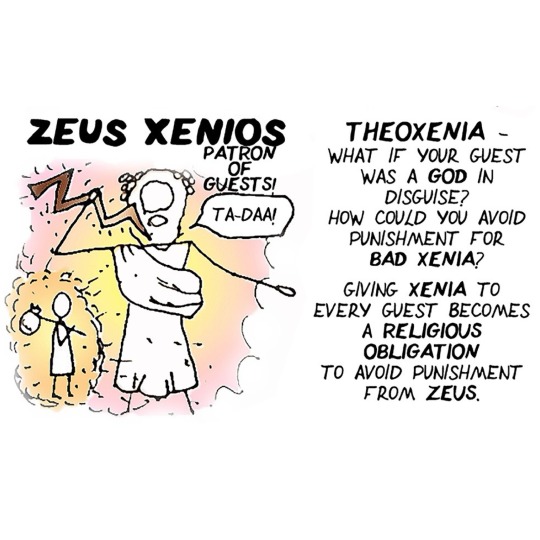


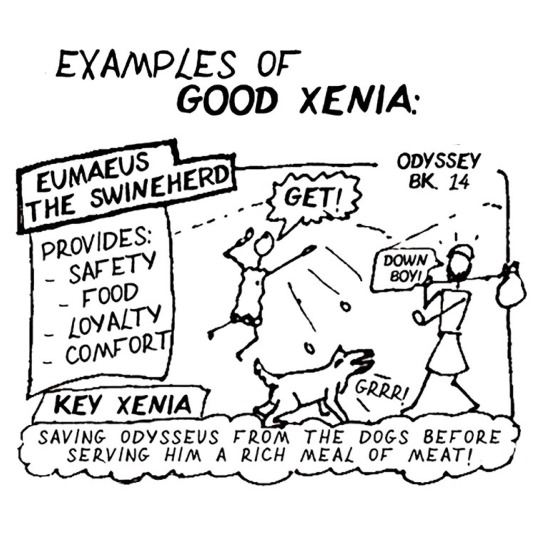


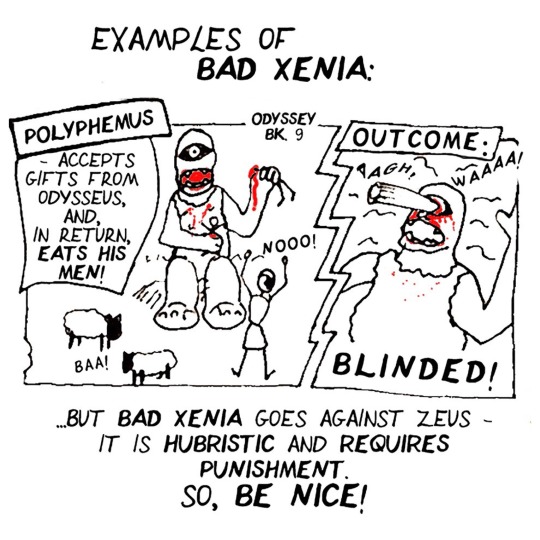
(2014/2022)
Also a (very shonky but incredibly popular!) video, if you fancy having the clmic explained to you in my best teacher voice -
What is XENIA? Greek Myth Comix explaining Homeric literature
https://youtu.be/oYQRIQtnvII
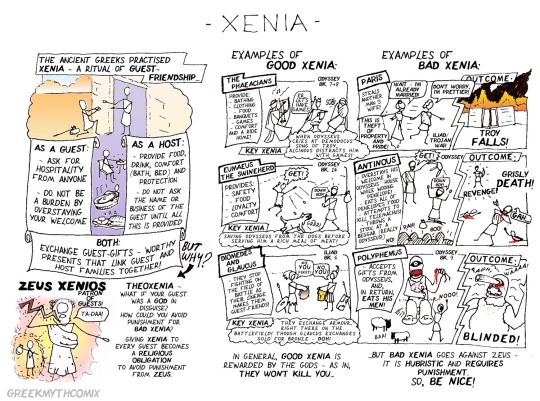
68 notes
·
View notes
Text
Fantasy Guide to Education

I'm always asked what sort of education different people recieve throughout different historical eras and since I'm heading back to college soon, I thought it was high time I made this guide.
Disparity

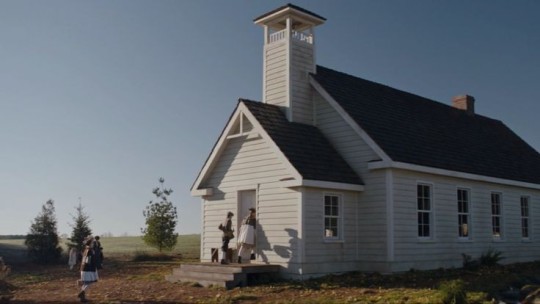
Education is viewed as a right by many but for some and thoughout history it was a privilege. For the wealthy and those of high status, education can be easily accessed. They can afford to tailor an education to fit their needs, they can hire tutors, and they can afford tuitions to top schools. For the poor, education was a luxury. However this doesn't mean that it was available. Some communities would fund a school or send their children to a local teacher - usually they had to pay a daily fee or at least bring kindling for the heating. Many poorer children also worked so they could not attend school consistently or were pulled out very early into their education. However, some poorer students could gain access to high level education if they were extremely bright or caught the attention of a wealthy benefactor who could fund their education.
Education as a Weapon
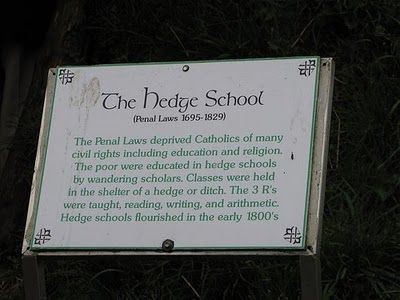
Education could also be banned for certain groups in society. It could be illegal to fund schools or host gatherings for students of a certain background, race, religion or gender. Education against the law could be punished by imprisonment, exile or execution. This is a measure usually taken by oppressive governments in order to follow a moral code or restrict the betterment of a certain group. An example would be the Irish Catholics under the Penal Laws.
On the otherhand, there is education that is influenced by the state to inject certain values, moralities and Opinions into a population. This is the intense restriction of reading material, removal of books that contest the teachings of the government or the kidnap of children from their culture, in order to forcibly educated them in alignment to their beliefs. An example would be the residental schools of North America and Canada and the AHS schools of Nazi Germany.
Content

As above, content of what children learn usually falls into a certain category. This is also true for the education offered to the wealthy and the poor. The poor would be offered a basic education, learning literacy and arithmetic, usually with an expectation that the children would not go on to any jobs that needs a broader education. Any higher education would be hard to obtain because of cost and the discriminatory view of the enrollment panels. The wealthy would have access to an array of different subjects including: The arts (drawing, music, painting, poetry, dancing), sports (riding, martial skills, rowing, hunting), arithmetic, geography, languages, geography and history. While progression to higher education will still be difficult, any affluent families are legacies of prestigious colleges or can make a donation to grease a few palms. These schools would be where the wealthy make lifelong connections and get springboarded toward opportunities.
Private Tutoring
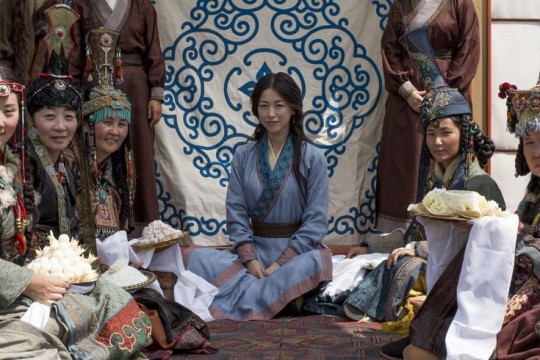
Whilst some affluent, aristocratic and Royal families send their children to schools, private tutoring in the home was a popular choice. Children would be educated at home but tutors who either lived in the home or come to the house. The children would be educated alongside siblings or the children of courtiers or neighbours. Private tutoring sessions would often be the only education for upper class women recieved, taught by governesses and tutors.
Premises and Equipment
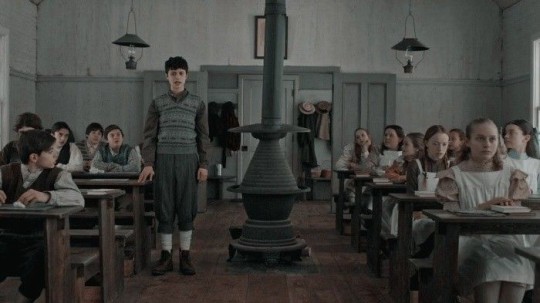
As mentioned above, wealthy and aristocratic families would usually attend established schools or attend school at home. They would be provided any equipment they needed. If they attend school, they would often wear a uniform. Some schools had multiple variations of the uniform for different activities. Many of the schools attended would be boarding schools. Boarding schools offered education to those who boarded and day students, however day students were often looked down upon as lesser than.
Poorer schools would be relient on donations and fees paid by students. As mentioned above, there may be a building reserved for classes - sometimes an designated schoolhouse or a teacher's home or a public building such as a gathering house or sometimes even outside - hedge schools. Equipment would be provided by the school. Uniforms at poorer schools were not a thing but students were expected to show up neat and tidy.
Corporal Punishment
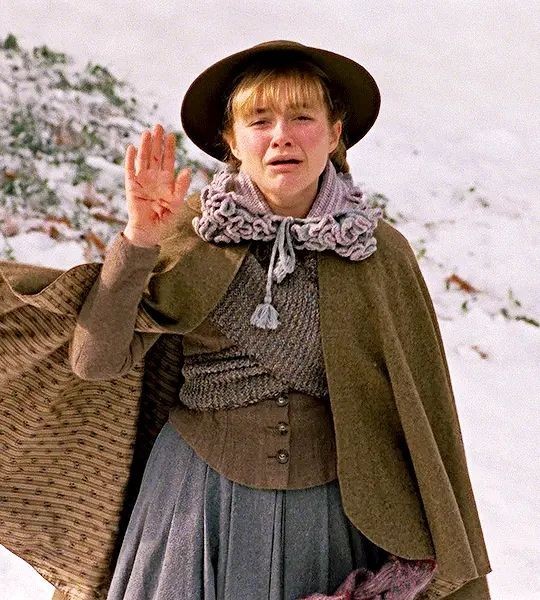
Corporal punishment at schools was the go to punishment for students. Teachers had free rein to strike children for mistakes and bad behaviour. Punishments include insolation, physical stress positions such as standing on a chair all day, getting objects thrown at them, being slapped on the back of the legs with a cane, being rapped on the palms or knuckles with a crop or ruler. Students may also be humiliated by teachers through the use of dunce hats, encouraging other children to bully them or by the use of verbal abuse. Corporal punishment did extend to all classes except for royal children since that was either taken by proxy by whipping boys or left up to parents.
798 notes
·
View notes
Text
Geology of Natural Disasters and How to write them into your fictional universe.
So, you want to write about a natural disaster to advance your plot and torture your players/characters even more? Let me tell you how, accurately.
I feel like unless it is a volcano, natural disasters are a pretty slept on plot drivers, and some of them are really cool and unique! Today, I will talk to you about land slides, earthquakes (And earthquake related disasters), and volcanoes.
Landslides: Probably one I see the least in stories, but one that would be incredibly interesting to write into a plot where they believe in curses. Landslides can happen along ocean bluffs, slightly hilly areas, and highly mountainous areas, this means it is something that can happen in most landscapes. But what can trigger a landslide? Mostly all you need to trigger a landslide could be just abnormally large amounts of rain, excessive deforestation (with a little bit of rain), or an earthquake. If you don't want to use deforestation or an earthquake as a catalyst, a really cool indicator that the land is slipping and may be prone to a collapse is J hooked trees.

This indicates that there is soil creeping slowly over time, and it may lead to a major landslide.
2. Earthquakes: Probably one of the easiest things to write, earthquakes can happen anywhere, but they are most common in places that are tectonically active areas. There are about three types of environments you can expect earthquakes to be common. The first is just rugged mountains, if your landscape looks like this, you should write in earthquakes. Associated hazards could be landslides, avalanches, and large falling rocks.
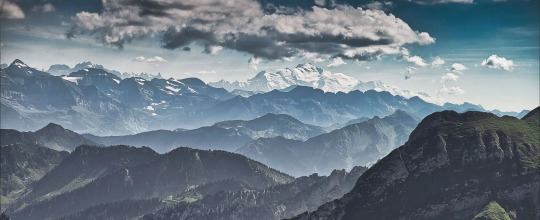
The next landscape could be a thin mountain range, next to the ocean, very scenic, but very dangerous. Essentially, I am describing a subduction zone environment.

Earthquakes in these areas could equal a couple different associated disasters. Scenario one: A very large earthquake happens, and the ocean begins to recede. This is a tsunami, enough said. If you are writing a tsunami though, please, please, do not write it as a large wave, thank you. Also, a common way people are hurt by tsunami's are from them going into the ocean because they don't understand a tsunami is going to happen.
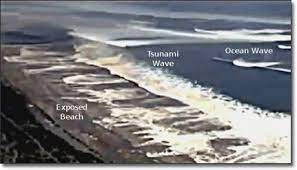
Scenario two: A large earthquake happens, your characters are in a valley and suddenly the ground begins to liquify as the ground shakes, once the shaking stops, the ground becomes solid like nothing ever happened, except everything has suddenly sunk into the now hard ground. This is called liquefaction and it typically happens in areas that have loose dirt or lots of saturated soil.

Scenario three: There are a lot of small earthquakes, they do not cause a lot of damage, but you begin to notice that one of the isolated mountains has a plume rising. Earthquakes can indicate lava moving underground and the filling of magma chambers.

The next environment that can host lots of earthquakes would be regions that have a lot of really deep valleys and small mountain ranges (not cone volcanoes), but overall seems pretty flat.

This indicates a transform fault like the San Andreas. If you want to hint at there being earthquakes in the area, you can show fence posts that are suddenly several feet out of line at a dilapidated farm or something similar.

(These earthquakes are different because they are cased from sideways movement, not an up-and-down movement this hint can only be used for this environment). Volcanoes would not be found here, but liquefaction and landslides could still occur here.
4. Volcanoes: If you thought earthquakes had a lot of information, volcanoes do too. First you have to ask yourself, what kind of volcano you want to have, what kind of eruption style? So lets break down the kind of eruptions you can have and what their landscapes look like. Hawaiian Shield volcano: This will produce a smooth fast lava, the landscape typically is pretty flat, but there will be small cones and the rocks can have a ropey or jagged texture and the rocks will be almost exclusively black to dark red.

Stratovolcanoes: These will be solitary mountains, typically, that look like perfect cones (Picture shown in earthquake section). These will have large ash cloud eruptions and pyroclastic flows, they may have some lava, but typically most damage is done from the pyroclastic flows (think Pompeii). Some hints of these, other than describing the cone features (which can be hidden by other mountains), would be to talk about petrified wood! Trees can get fossilized in the ash and I imagine it would be very strange to find this rock that clearly looks to be a piece of wood, but its a rock. Subcategory- Calderas: Used to be a large stratovolcano, but they erupt so explosively that the entire cone collapses and creates a basin.

There are a lot of kinds of volcanoes out there, so forgive me for just putting an infographic and then talking to you about these really rare types of eruptions that I feel like people should know about.
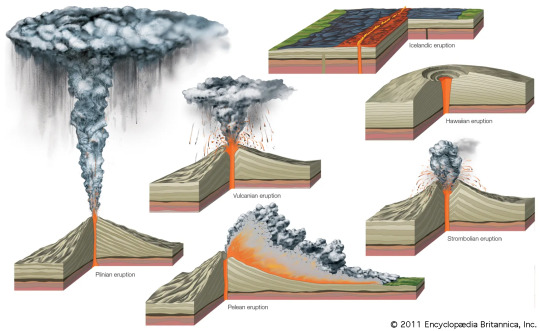
Okay lets talk about blue lava (kind of) and black lava

You will notice the lava is still red in the middle of this image, during the day these would look like a normal eruption, but at night the burning sulfur would make it appear blue. Some cool features other than this, would be that any water in the area would become very acidic and burn the skin due to sulfuric acid. This would again be really cool if you are trying to describe a 'cursed' land.
Black lava: This happens only in the east African rift I believe, but it is a carbonatite lava, but if you are writing in a rift valley (where the continent is tearing apart to form a new ocean) this might be a cool feature. The lava will cool white and will quickly erode, it makes for a very alien landscape!

Anyway as always, this is supposed to be an introductive guide for the basics of writing geology to create cool landscapes/features into dnd or fictional universes, if you are a geologist please understand my oversimplification of tectonics, I didn't want people to run away.
4K notes
·
View notes
Text
WorldBuilding Ask Game
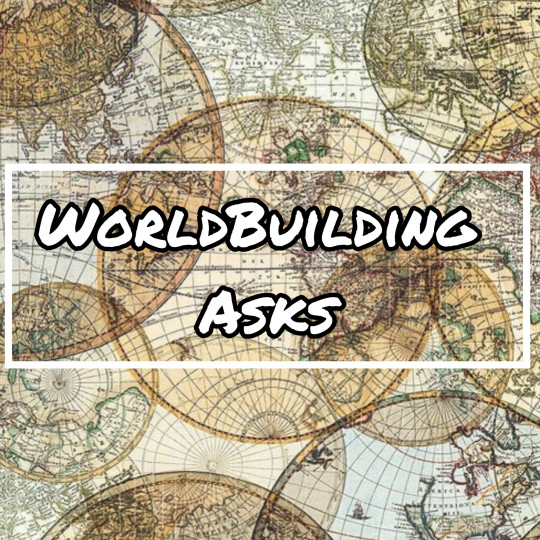
Here is a little ask game for WorldBuilding in your WIP to pad out one country or all of them! Use it for yourself or ask a friend and spread some love. Focus on a particular section and have fun!
Geography
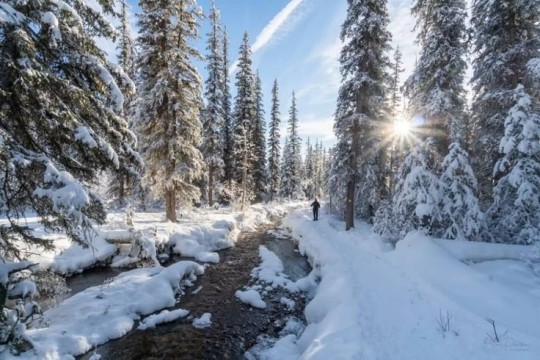
What does your world look like? What's the biome? Are there different ones?
Are there any oceans? If so, are they accessible? Are they a reliable source of travel and food?
Are there any rivers in your world? Any lakes? What's the longest river? Deepest lake?
Is there a safe supply of drinking water? If not, why not?
Are there mountains in your world? What's the highest one?
What is the weather like? How does this effect life?
What animals inhabit the world? What animals are indigenous or considered exotic?
What are some natural features your world is famous for? Is your world considered beautiful?
How many countries in your world?
How are countries divided? By natural lines or by agreements?
Population
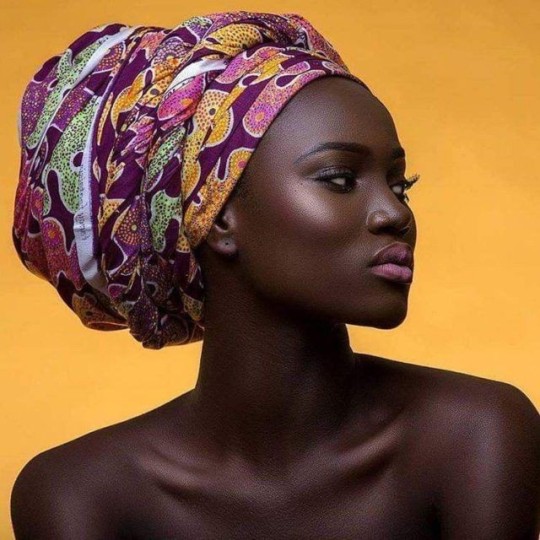
What's the population like? Is it large or sparse?
Is there any factors in population density? Do more people live in a certain area more than elsewhere? Why is that?
Are there different peoples living in your world? If so, how do they get on?
How important is nationality? Are foreigners tolerated? Or are they unwelcome?
What countries get on? What countries hate one another?
Are there any important cities? Why are they important?
What's the architecture like? Are there any outside influences?
What's a typical building material? What's considered an expensive feature to include?
What is infrastructure like? Are roads and railways in good condition?
Is there public transport? Is it reliable?
Government
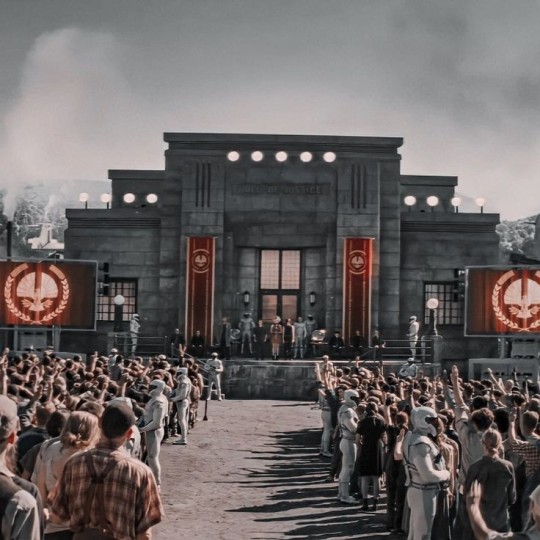
What system of government does your world adhere to? Is it popular?
Where is the seat of government?
Are there different governmental agencies?
Are there political parties? If so, what are their goals?
How much control does the government have over the average person?
Can your people vote? If not, why not? If so, who has/hasn't the right to?
Are there any parties or organisations that oppose the government?
How does the government crack down on sedition?
Are people allowed to criticise the government? If so, how? If not, how do they get around it?
How are laws made? Who makes them?
Is there any odd laws in your world?
What are some punishments to crime? Are they considered fair?
What crimes are unfathomable for the people?
Who handles justice? Is justice obtainable for all?
Are there any police? What's their reputation?
What role does the military play in your world?
Who controls the army? Head of state or government as a whole?
Is it considered a good career path?
Who can join the army? Are there any restrictions?
What is your world's stance on war? Are there any neutral parties? Or particularly warlike ones?
Commerce and Trade
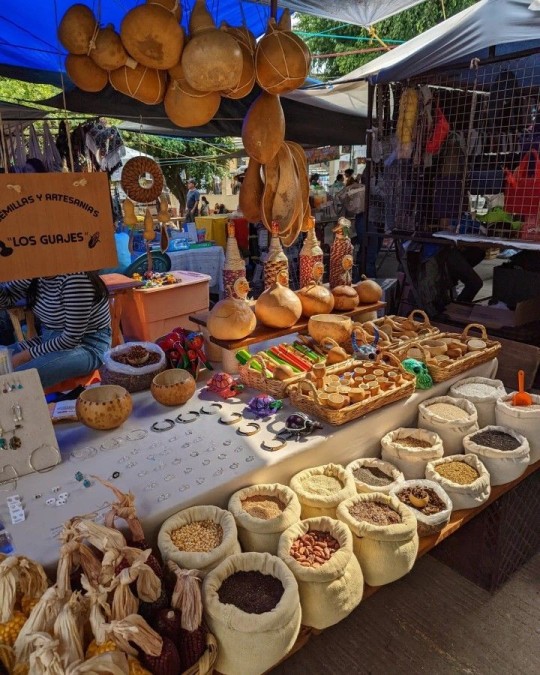
How is trade done?
Is currency universal or dictated by region?
How is your economy going? What effects it?
What trade is your world known for?
What are some exports? What must your world import?
Are any goods considered luxurious?
What services are available in your world? What services are niche?
What sort of work is common? Is work readily available?
Who is expected to work?
Are workers treated fairly or unfairly?
Are there any ways workers are protected? If not, what are some consequences?
Is your world more reliant on technology or on labour?
Is agriculture possible in your world? If so what can your people grow?
How big is industry? What goods can your people make?
What resources can your country exploit?
What are some barriers to trade and commerce?
Is your nation known for quality? Or Quantity?
Who does your country trade with most often? Who do they boycott?
Are there any major ports in your country?
Are there any banned goods? If so, is there a black market for their purchase?
Society
How society expect one to behave in public? Are there different expectations for different people/genders/ranks?
Is there a social order? Can one move up the ranks?
Is there any considerations made on account of rank, gender, age or position?
What is considered a social faux pas?
Are there any gestures or actions that are considered rude or socially unforgivable?
What would utterly shock somebody to see somebody do?
What are some opinions that are normal for your world but can be considered subversive in real life?
How can one rise up the status ladder? Is there much trouble to do so?
What denotes a person's place in society?
How is life different in cities compared to life in the countryside?
Daily life
Where would someone go to buy their weekly shop? Is food easy to come by?
What would be the daily routine of the wealthy? The common man?
How is hygiene handled in your world? Where does one go to spruce up?
What would be some day to day tasks one might face?
What is the favoured means of travel?
Are there any problems in your world that could effect a daily routine? Potholes? Gigantic spiders? Acid rain?
What ammenties would an average person expect to have access to?
Where would one go if they are injured or ill? What's healthcare like?
Do people feel safe where they live? Are there any places somebody might face danger?
How do people communicate? Is it difficult? Why?
What do people do for fun? What's considered normal fun versus hedonistic?
What pastimes are common? What kind aren't?
Is education valued?
Is there access to education? If so, for who?
Are the population educated? If so to what extent?
Family Life
What is the typical family set up?
Is extended family important?
Who can be considered family? Who can't be?
Is marriage considered a duty? Or is it more of a personal choice?
Is divorce possible?
Can people adopt children?
What happens to orphaned children?
Are children important? If not, why not? If so, why?
What are some typical toys children play with?
What are some games children play with one another?
How is in charge of household chores?
Is there a hierarchy in families?
Are children expected to take on certain roles?
What is the living situation like between the different ranks? Are the roles different?
What's considered the proper way to raise a child?
Culture and Languages
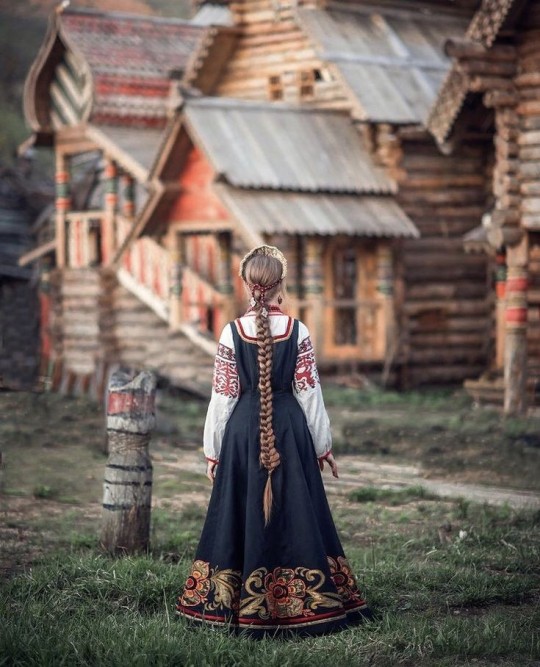
Are there multiple cultures in your world? How do they differ? Do they mesh well together?
How are cultures similar? How are they different?
Are there any traditions in your world? How important is tradition?
What are some rituals your culture undertakes?
Are there any special days? Events?
What are some traditional values in your world? Does it effect daily life?
Are there traditional clothes for your world? Are they something somebody wears on a daily basis or just on occasion?
Are there any rules around what people can wear?
What would be considered formal dress? Casual dress?
What would happen if somebody wore the wrong clothes to an event?
What languages are spoken in your world? If so, how do they sound?
Are there any dialects? If so, how do they sound?
Are most people monolingual? Or bilingual? Or multilingual?
Are there any languages that are closely related?
What is considered a universal language?
Religion

Is religion a thing in your world?
Is religion a staple of life or just a small part?
Does religion affect politics, personal lives and affiliations?
Is your world sectarian? Or ruled by religion?
What are some influences religion has on daily life?
What sort of religion is it? Monotheistic? Polytheistic?
What are some myths your people believe in?
What common rituals does one undertake on a day to day basis?
How does one please a deity?
Where do your people pray? How do they?
What symbols would denote a follower of a certain belief system to a stranger?
What places or objects are considered sacred?
Are there religious orders? If so, who can join?
Is there tolerance or violence over religion? If so, between which faiths?
Food and Drink
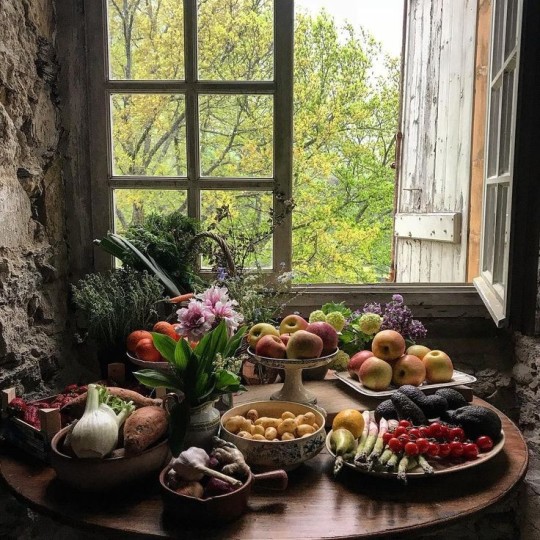
What are some traditional dishes in your world?
What would be a basic diet for the common man?
What's considered a delicacy?
Is there a societal difference in diet? What are the factors that effect diet between classes?
Is there any influence from other cuisines? If not, why not? If so, to what extent?
What would a typical breakfast contain?
What would lunch be?
What would be a typical dinner?
What meals are served during the day?
What's considered a comfort food or drink?
Are there any restrictions on who can eat what or when?
Are there any banned foods?
What stance does your world take on alcohol? Is it legal? Can anybody consume it?
Are there any dining customs? Are traditions?
Is there a difference in formal meals or casual meals? If so, what's involved?
Are there any gestures or actions unacceptable at the dinner table?
How are guests treated at meals? If they are given deference, how so?
Are there certain rules about how one can prepare food?
Are there any restrictions on eating with certain people?
How is food generally prepared by?
History
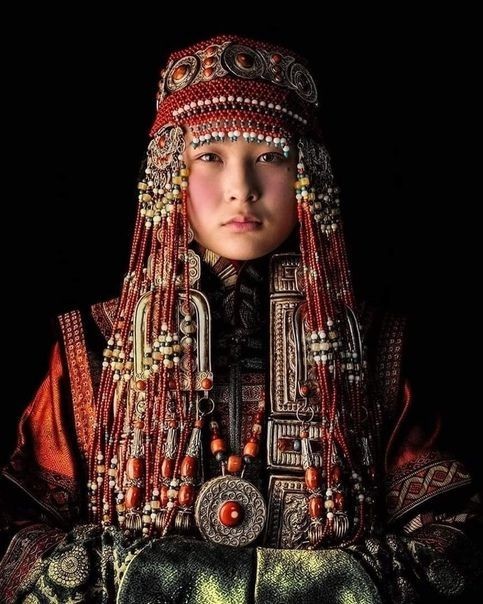
Who are some notable figures from history?
Who founded the country?
Is history looked back on with fondness? Or do your people rather forget?
Are there any heroes in history? Any villains?
What are some highpoints in the history of your land?
What are some points of history nobody likes to speak about?
Does history effect your land, people, culture, language in the present? If so in what ways?
What historic monuments are still around in the present day? What has been lost?
How do people learn about history? Do they learn the truth? Or just an abridged version?
What's a historical event that is important to the story?
1K notes
·
View notes
Text
Anyway a lot of people think they're so original but are not... "fiction is bad and childish because you're thinking about things that are Not Real instead of things that are Real and reading/thinking about it will prevent you from living a grounded, sensible adult life" is not a new take, it has been around for literally hundreds if not thousands of years and has been debunked in every age
228 notes
·
View notes
Text

Food for Adventures Part 2: Meat Pies
While we like a light pie dough now, historically, the goal was sometimes just preservation.
After making a clay-like dough, you work it into a pot shape then put in your filling. Finally, pinch the lid closed and use an egg-wash to help seal it. When done, the pies can be shelf-stable for a week or more.
Townsends has a great video on this here.
Essentially, you are making an air-tight seal, so the goal is not really for an edible crust. This method is quite similar to trenchers, which was a bread-plate common in the middle-ages. After using them, they could be eaten with sauce, or given to the poor.
Sometimes, the pies were even sold food-truck style from oven’s on wheels.
With their long shelf-life and the availability to purchase them last minute from a baker or street seller, your character might place meat pies into a wicker container before heading out on adventures.

3 notes
·
View notes
Text

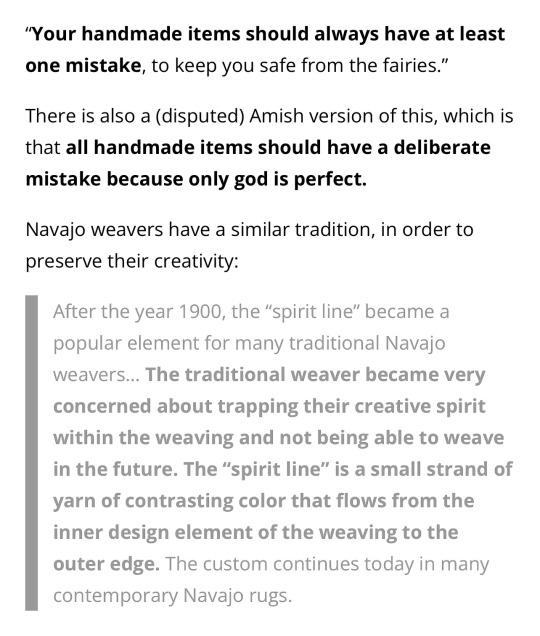



Collection
88K notes
·
View notes
Text
i think that killing a dragon should have catastrophic nuclear-fallout level environmental consequences tbh. their blood should scorch and wither the earth with fire and poison, the toxic fumes released as they decay should choke the land and all nearby living creatures, and the entire landscape where they fell should be transformed into a blighted wasteland where bleached leviathan bones loom upwards out of the ground as a warning that can be seen from miles away, the boundary markers of an exclusion zone.
67K notes
·
View notes
Text
Food for Adventures Part 1: Hardtack
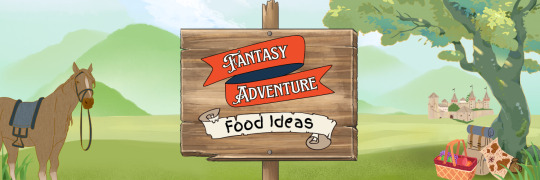
If you need an easy travel food for characters, there is a historic solution that might help with that.
Hardtack is a type of bread or cracker made from flour, water, and (sometimes) salt. Due to their long shelf life and how easy and inexpensive they are to make, hardtack is a travel food that has a very long human history.

Reproduced 19th century army (left) and navy (right) hard tack. Image Source
The hardtack was typically baked twice at a low temperature, though sometimes more than twice if the journey would be long. The goal was to dry it out as much as possible, so that (if stored well) it would not go bad. Under ideal conditions, they can last years. However, while on the road, that could not always be possible, so people would get the extra protein of eating weevils(which are harmless to eat…though still likely unwanted).
Due to how dry they are, most people hydrated them in some way, such as by dipping them in a beverage like tea, or crumpling them for use in foods like chowders. Others would crush them, add water, and fry them into a odd pancake.
Hardtack was even called “sea biscuits,” “ship bread,” or “navy bread,” due to their long history of being used aboard ships. For the ancient Romans, however, they were called “Bucellatum,” and each soldier would carry their rations.
“The Codex Theodosius(7.4.11) dating from 360 states that troops on the move should receive hardtack biscuits (buccellatum), bread, ordinary wine (vinum) and sour wine (acetum), salted pork and mutton. It seems that hardtack and acetum would be consumed for two days, and on the third day the decent wine and bread would be eaten. Troops were ordered to collect twenty days rations from the state warehouses before a long campaign, and carry these rations themselves.” The Romans in Britain
Through the centuries, travellers and soldiers relied on the dried bread, which lead to J.R.R. Tolkien eating it while he served in WW1. Some theorize hardtack could be one possible inspiration for the “Lembas” that J.R.R Tolkien has the characters eat in The Lord of the Rings.
Even today, you may find a modern day version of hardtack in ready-made military food packs (often called IMP’s or MRE’s). Thanks to the ability to air seal, the modern ones are not quite as dry, but — speaking from experience from my teen years eating them in cadets — they still certainly make you want to drink a lot of water.
So, this bread has a long history for a good reason, which also could make it the perfect travel food for your adventurer characters.
Mix 5 cups of flour to 1 cup of water containing a 1/2-tablespoon of salt. Knead into a dough and roll out to 3/8-inch thickness. Cut into approximately 3-inch squares and pierce each with a fork or ice pick several times. Bake in a 400-degree oven for 30 minutes or until slightly brown.” “A Taste For War: The Culinary History of the Blue and the Gray” by William C. Davis (2003)

Ad for a Ship Bread Bakehouse in 1832
12 notes
·
View notes
Note
Do you have any advice on developing a fictional etiquette system?
Study different cultures and etiquettes to get the feel of what you're really trying to build.
You will generally need:
How people introduce themselves (what's considered formal or casual)
How communication is handled? Who can talk to who abf in what way?
How people behave at important functions vs casual functions
How does etiquette divide classes and rank
How does etiquette dictate one's eating, dressing, hygiene and personal habits
What are the consequences of not following the etiquette
How etiquette separates the genders (if it does) and what are expectations of perfect etiquette for the genders
115 notes
·
View notes

